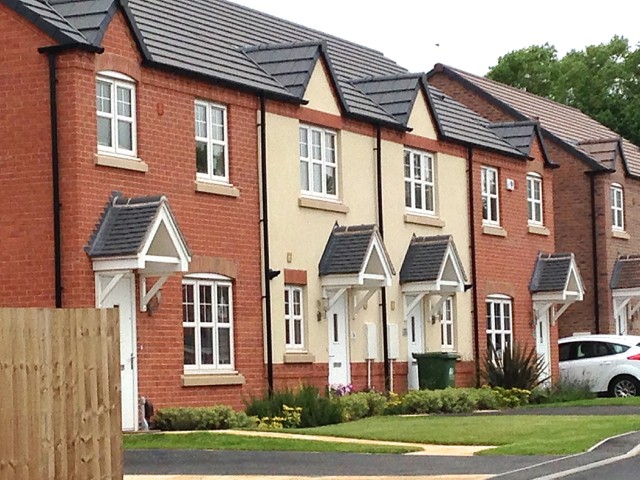
It’s safe to say that many predictions made about the start of this decade turned out to be worthless. But it’s also true – as many people have said – that some of the ways that the COVID-19 crisis affected the world accelerated what was already happening rather than reversing their course.
We’re going to look back on how that has all played out in the English planning system.
Although coronavirus might have affected the speed of action and some of the priorities, the core idea of the government’s approach to planning is reasonably clear. And that idea is that planning should be much simpler, much quicker and more certain.
That’s hardly a novel concept, but armed with a large majority and the biggest public emergency since the Second World War, in 2020, the Johnson government seemed to be going full speed ahead with its attempts to transform planning.
The headline move was the Planning for the Future white paper, published in August 2020, which promised the biggest changes since the introduction of the modern planning system in 1948. The white paper proposed moving towards a zoning system with permission in principle existing for plots in growth and possibly renewal areas, plus many more types of schemes being covered by permitted development rights.
However, there were at least two big signs that the step from white paper to law might not be straightforward. The first is that Planning for the Future is extremely vague – it’s far from clear how much of it would work in practice. This led to people reading the white paper and coming up with entirely different conclusions: does it represent a huge threat to the Green Belt or is it, on the contrary, far less radical than billed and hopelessly timid on the Green Belt in particular?
The second was that the central idea was based on every council having an up-to-date local plan. Since there are councils currently operating with local plans dating back to the mid-1990s, it could take many years - if not decades - to fully implement the new system, and there could even be a time when parts of the country have one set of rules and other parts vastly different ones, which seems a recipe for discontent. Back in August 2020, the implied target date appeared to be December 2024 but that always seemed hugely optimistic.
Opposition to the proposed reforms – at least as people understand them – hasn’t just come from the obvious places. The Planner reported that most Conservative MPs – including former Prime Minister Theresa May – were against the policies suggested by the white paper. For an example of what a Conservative local authority in a rural area thinks about Planning for the Future, take a look at the response New Forest district council posted on its website.
“This White Paper fails to address these continuing underlying structural issues in the country's housing market, which (major) tinkering with the planning system has not and will not address.
“Overall, while successfully identifying some of the problems with the current planning system, the White Paper fails to put forward 'solutions' that are either coherent or likely to be effective in meeting the White Paper's own objectives.”
Meanwhile, the government swiftly binned the much-criticised formula for working out housing targets – but it always seemed like the critics would demand rather more changes than that.
In the Queen’s Speech in May 2021, the forthcoming planning bill was announced. Again, the details were light - it promised to:
But the momentum was derailed by the Chesham and Amersham by-election in June - the Conservatives lost a constituency that they had held since its creation in 1974 and the looming planning reforms were blamed.
In the autumn reshuffle, Robert Jenrick was out and Michael Gove came in as the Secretary of State for the renamed Department for Levelling Up, Housing and Communities. He seemed in no rush to push forward with the controversial bill, and as 2021 gave way to 2022 there is no sign of it. We still expect there will be a planning bill in the parliamentary year, but exactly when and how much of the radical rethink remains is hard to guess right now.
If all that makes it sound like nothing has happened, that couldn’t be further from the truth. The Johnson government has taken a two-track approach to planning reform. And it may well turn out that in the long-term, the barrage of interim measures brought in already prove more significant than the clean slate promised down the way.
Those measures included a series of new permitted development rights along with the changes to the use class order. The new permitted development rights take us closer to a rule-based system while the changes to the use class order, especially rolling together shops, offices, gyms, restaurants and much more, severely limit the power of local councils to influence what non-residential buildings are used for.
In 2021, these were brought together in the proposal for a new permitted development right for converting Class E premises to homes. This replaced existing office-to-residential and retail-to-residential permitted development rights but many experts think it could have a much more dramatic effect.
For a start, it brings in a far wider range of businesses. Secondly, while the old Class M for retail-to-residential had a size limit of 150 sqm, the new Class MA right goes up 1,500 sqm. And this PDR is available in conservation areas, in contrast to its predecessors Class M and Class O (office-to-residential).
With wave after wave of major high street names heading into administration or worse, there will be no shortage of landowners interested in turning their commercial properties to residential. The question is whether this happening through PDRs will cause damage to those businesses wanting to continue on increasingly fragmented shopping parades.
We should point out that these homes built using these new PDRs – like all PDRs now – will have to comply with national space standards and provide natural light, following justified criticism of the way some developers used Class O and other rights to create tiny and sometimes windowless flats. The natural light clause, in particular, could scupper many potential conversions, as many shops only have windows at the front of the building and some offices are utterly reliant on neon lighting.
When the government started bringing in 2020’s new permitted development rights, it raised the hopes of developers and the fears of campaigners and neighbourhood groups.
In their shared dreams/nightmares, there would be two storeys going on top of buildings all over the place as well as vacant offices being demolished wholesale and quickly designed flats going up in their place. Yet what has happened has not matched what both sides anticipated would take place.
Most councils took a hard line on upward extension schemes, with many treating the prior approval applications as if they were no different to a full planning application. Several appeals have now suggested that these councils were overstepping the mark, and – for instance – they are only allowed to assess the appearance of the building itself, not how it looks in context. (Other appeals, confusingly, have said the opposite). The truth is that the legislation has given councils more scope to say no than some of the critics realised, and councils are using that scope.
While that ability to say no might explain the lack of Article 4 directions governing upward extension applications, Class MA, by contrast, has been greeted with a number of councils, especially in long, putting in directions to curb its use. In the revised NPPF, the government again stressed that Article 4 directions should be rare and very specific, but that instruction seems to be widely ignored.
Before the virus and the government’s push to get us building again threw everything into chaos, the focus of policy in 2020 was going to be about beauty in architecture and construction. The Building Better, Building Beautiful Commission delivered its report Living With Beauty in January 2020.
Its work, ostensibly to improve the standard of design in the built environment in this country, is crucial to the government’s attempt to speed up and streamline the planning process. In theory, if a community can agree on what makes a beautiful building, then anything that matches those ideals will sail through the new planning process and everyone will be happy…
There are a lot of sceptics. Again, let’s go back to the New Forest District Council. A council far from the big cities, whose headquarters is in a village of 3,000 people, New Forest represents the England of traditional-style houses Living With Beauty seems to dream of. And yet, the district council responded to the white paper consultation question of “Do you agree with our proposals for implementing a fast-track for beauty?”, with:
“No - this proposal is fraught with difficulties. How can 'beauty' be judged in any meaningful way? How can 'beauty' be defined? 'Beauty' and 'Sustainability' are not the same thing. Just because a building looks beautiful (whatever that means) does not mean that it is issue free in terms of all the other matters the planning systems needs to address.”
Nevertheless, the government seems determined in its idea that strong national and local design codes will ease people’s fears about what might be about to be built along their street. We remain doubtful.
Not everything since 2020 has been about the coronavirus. Older crises have had continuing after-effects. In the worlds of architecture and planning, the most obvious of these has been Grenfell.
The Grenfell Tower Inquiry is now in its fifth year and testimony damaging to the reputation of both the companies involved and the tower’s landlord has continued to be heard. The government’s responses to what has been learned so far included the long-awaited social housing white paper and the draft Building Safety Bill. Meanwhile, the saga of who pays for the replacement of dangerous cladding continues and has been a major contributor to the government deciding the time has come for leasehold reform.
However, any sense that the Grenfell Fire would dissuade developers from building high-rises in London has proved groundless.
Of course, planning and architecture aren’t detached from the rest of the world. As well as – yes – coronavirus, the context has included the economic pressures caused by the health emergency and Brexit uncertainty. Against that backdrop of gloom, though, residential property prices have kept rising. Some would argue that prices are stubbornly high, but the fact is that they have proved resilient throughout the more than half a decade of political turmoil.
On the other hand, there are some signs that the UK population will peak sooner than expected and that the long-term need for housing might be less than current projections have it. But all that is a long way down the line… so we expect the demand for politicians to somehow increase the supply of housing while miraculously no construction takes place either on green fields or next to anyone’s home will continue.
| Choosing an interior designer - JT Interiors |
Choosing a surveyor - RPSA |
Working with an architect - Urbanist Architecture |
 |
 |
 |